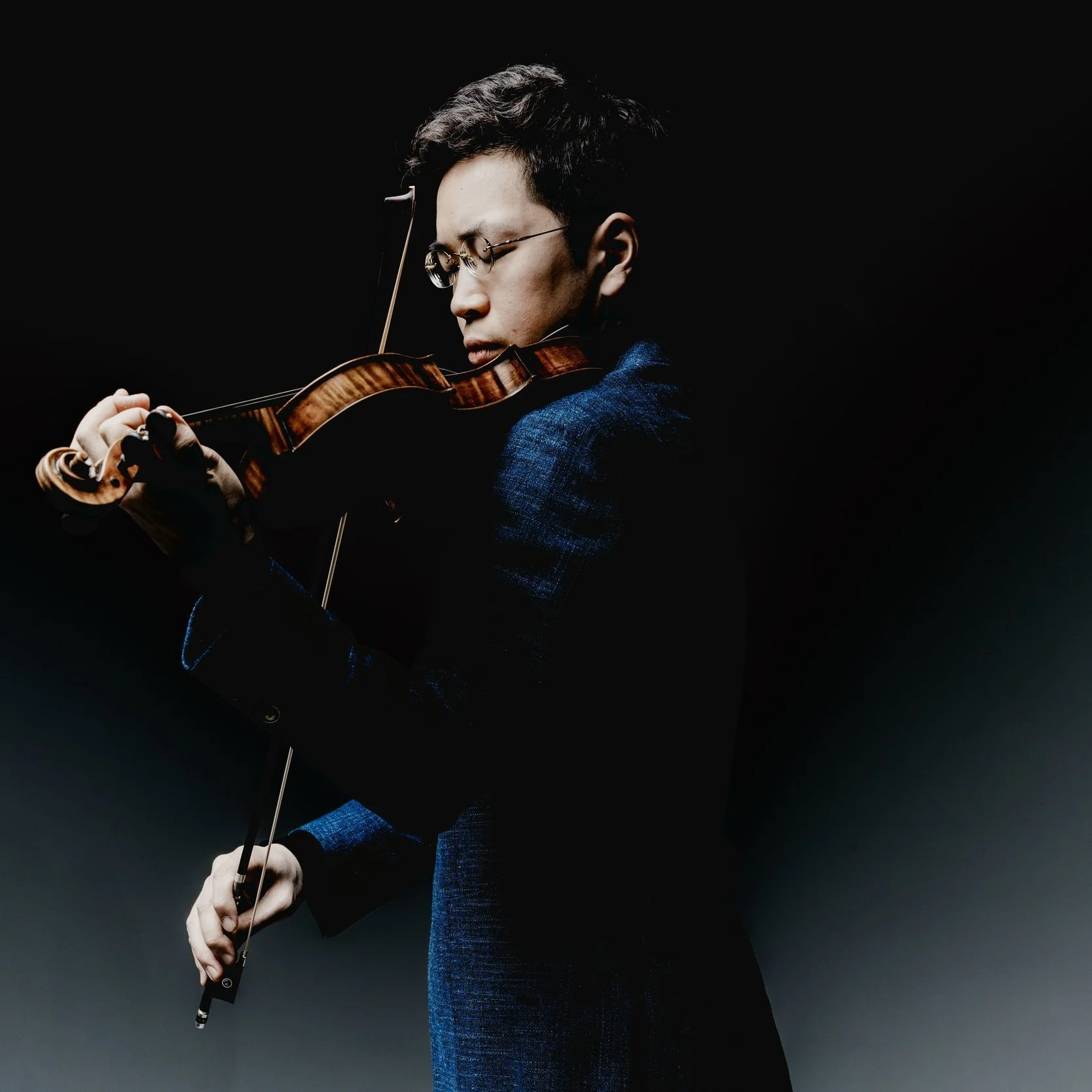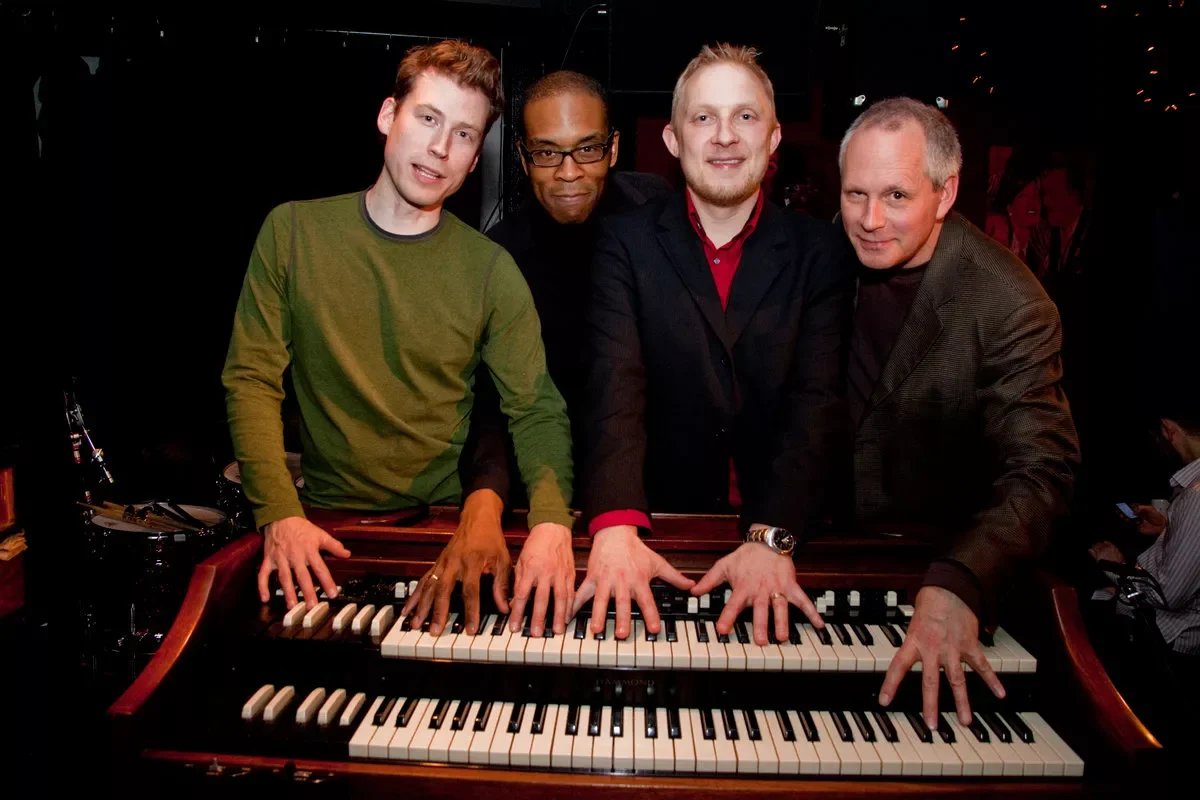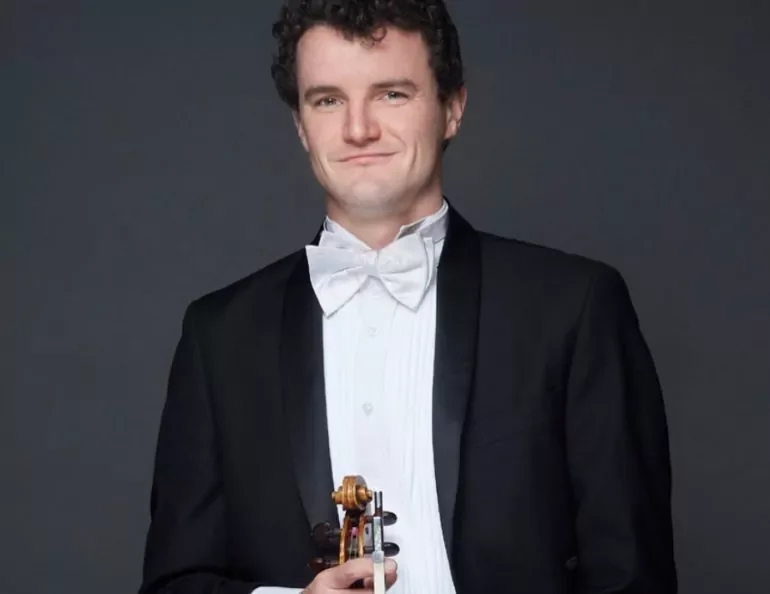Music review: Paul Huang captivates, Elektra Women's Choir delights, and John Adams entrances in VSO performance
Orchestra put pedal to the metal in innovative program of premieres and debuts featuring works by Dmitri Shostakovich, John Adams, and B.C.’s Nicholas Ryan Kelly
VSO music director Otto Tausk
Paul Huang. Photo by Marco Borggreve
Otto Tausk Conducts Shostakovich & Adams with the Vancouver Symphony Orchestra at the Orpheum Theatre for two nights, to April 27 at 8 pm
THE VANCOUVER SYMPHONY ORCHESTRA’S most recent program featured, unusually, a series of firsts: Earth, Beloved, a new work for orchestra and choir by B.C.’s Nicholas Ryan Kelly, with the Elektra Women’s Choir; the VSO debut of virtuoso Taiwanese-American violinist Paul Huang with Dmitri Shostakovich’s Violin Concerto No. 1 in A minor, Op. 77; and the long-overdue B.C. premiere of John Adams’s Harmonielehre, almost four decades after its writing.
A cosmic ode to the Earth, Kelly’s piece sets poetry by Wendy Jean MacLean to a lush score of soaring women’s voices and impressionistic instrumentation. Opening with high-pitched string harmonics, it unfolded in a shimmering swirl, the choir exhibiting a purity of sound and clarity to lines that felt like incantations: “14 billion years of learning to breathe…. Our ancient souls remember the shattering of stars…” Accessible and cinematic, without becoming trite, it was an appealing work that confirmed Kelly’s skill as not only a choral composer, but an orchestral one as well.
Serenity was eclipsed by suppression (both emotional and political), as Huang took on Shostakovich’s emotionally turbulent violin concerto. A piece written in the mid-1940s, during the Soviet composer’s censure and denunciation as a result of Stalin’s “anti-formalist” cultural crusades, it’s a dark and brooding work that moves from repressed anger and steeliness to panicked agitation. With piercing clarity and poised presence, Huang delivered a deeply personal performance, with eyes closed and an inward focus.
He gave a creeping eeriness to the opening “Nocturne” movement, removing the vibrato at one particularly haunting moment, to intensify its cold and ghostly character. Next came the “Scherzo” movement, with its rebellious, crazed Klezmer-inflected dance. Technically perfect, Huang’s interpretation here seemed to lack a sense of complete and furious abandon—though his careful and considered approach to the “Passacaglia” was particularly affecting and poignant, his hopeful, soaring violin seeming to call out against a sea of darkness. The extended “Cadenza”, before the galloping “Burlesca”, was presented as a mournful dialogue between hopefulness and despair, anger and acceptance, building up into the frantic, driving last movement. Here, again, what Huang lacked in extroversion he made up for with technical prowess. And while the crowd brought him back for three curtain calls, he declined an encore—perhaps saving his stamina for the following night’s performance.
This would have provided pleasures enough to sate the audience, but with John Adams’s minimalist-infused defence of tonality, the VSO put pedal to the metal.
From Harmonielehre’s hammering opening blasts of horn and timpani to its ecstatic closing chord, conductor Otto Tausk led the orchestra in an entrancing 40-minute voyage through the seminal work, which employs the hypnotic use of musical “cells” and pulsating polyrhythms to create a relentless sense of forward movement in its emphatic rejection of 12-tone music. Physically demanding, with its endless looping fast-moving string patterns, it’s a wonder the string players could still move their bow arms by the end—but cross the finish line they did, capping the performance off with a roar that had scarcely gone silent before the crowd was on its feet. It's a mystery why it took 39 years for the work to be performed; it would be criminal if it took another 39 for it to return again.
![]()














